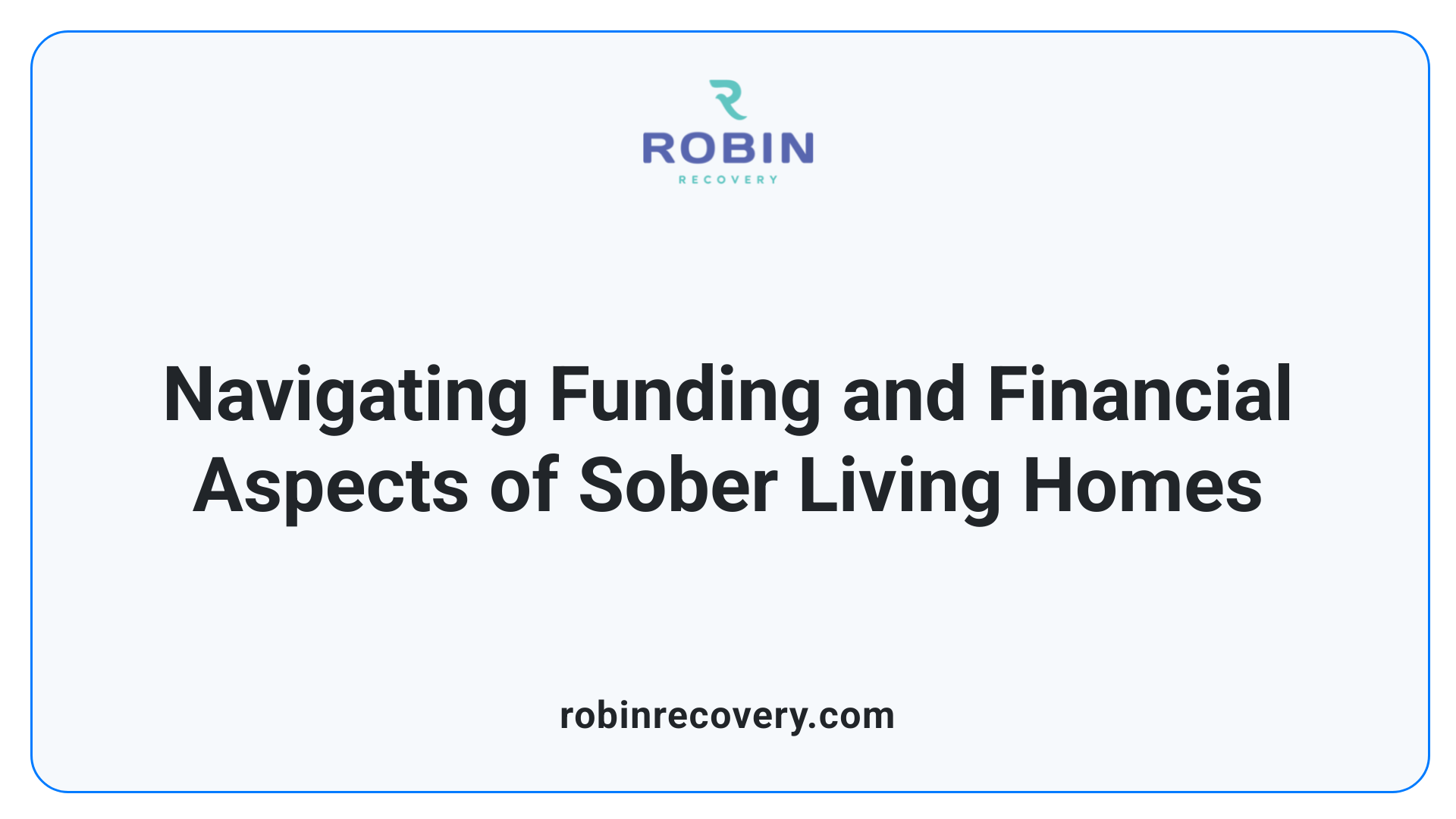The Benefits of Sober Living Homes

Introduction to Sober Living Homes
Sober living homes serve as a vital transition between formal addiction treatment and independent living. These facilities provide structured, alcohol- and drug-free environments that support individuals recovering from substance use disorders. Through peer support, accountability measures, and community engagement, sober living homes offer a foundational resource for achieving and maintaining long-term sobriety. This article explores the various aspects and benefits of sober living homes, highlighting their role in fostering successful recovery journeys.
The Importance of Sober Living Homes in Recovery

Why is recovery housing important?
Recovery housing is vital for individuals seeking to overcome substance use disorders. Sober living homes create a safe and supportive environment free from drugs and alcohol, which is essential during the early stages of recovery. This structured setting is crucial in helping residents maintain sobriety as they adjust to life after treatment.
The presence of peer support and accountability significantly enhances recovery outcomes. Living among others who share similar experiences fosters a sense of community and belonging, diminishing feelings of loneliness often experienced in recovery. Rules such as regular drug testing, mandatory house meetings, and the enforcement of curfews promote responsibility and ensure that residents remain focused on their sobriety goals.
Moreover, sober living homes emphasize the importance of promoting life skills and community connections. Residents are encouraged to engage in daily activities that cultivate essential life skills, such as financial management and healthy meal preparation. This enables them to build a foundation for successful independent living post-recovery. The connections made during this transformative period often serve as essential support networks, bolstering long-term sobriety and enhancing the overall recovery experience.
Research supports that those who reside in sober living homes during outpatient treatment demonstrate improved outcomes, highlighting the critical role these environments play in facilitating recovery.
Core Benefits of Sober Living Homes

What are the benefits of sober living homes?
Sober living homes offer numerous benefits for individuals in recovery from substance use disorders. They provide a safe and supportive environment free from alcohol and drugs, which is crucial during the initial stages of recovery when the risk of relapse is heightened.
Safe and supportive environment
The primary advantage of sober living homes is the structured, drug-free environment they create. This atmosphere helps residents focus on their recovery without the distractions or triggers associated with their previous lifestyles. Access to supportive peers who understand the challenges of sobriety also promotes emotional healing.
Accountability
These homes foster accountability among residents through established rules and expectations, such as participating in house meetings and undergoing drug screenings. This structure encourages individuals to adhere to their sobriety goals while providing the necessary support to maintain a stable recovery process.
Community engagement
Sober living homes also facilitate community engagement and support networks. Residents can connect with others who are going through similar challenges, creating a sense of belonging and shared experience. These relationships can significantly enhance motivation for maintaining sobriety and contribute to long-term recovery success.
In summary, the combination of a safe environment, accountability, and community engagement forms the foundation for successful recovery in sober living homes. This holistic approach addresses the needs of individuals striving for a drug-free life while building the skills necessary for independence.
Structural and Functional Aspects of Sober Living Homes

Rules and Expectations
Sober living homes operate with a clear set of rules designed to foster a supportive atmosphere for recovery. Residents are expected to maintain sobriety by adhering to drug and alcohol-free policies. Regular drug tests help ensure compliance and promote accountability among residents. Participation in house meetings and 12-step programs is often mandatory to enhance community support and maintain focus on sobriety. These requirements create a structured routine for residents, helping them cultivate self-discipline and responsibility.
Role in Gradual Reintegration into Society
Sober living homes play a crucial role in easing the transition from the restrictive environment of rehabilitation to independent living. They provide a stable, drug-free space where individuals can practice essential life skills learned during treatment. Residents have the opportunity to regain independence gradually, making it easier to manage everyday responsibilities without the triggers that might lead to relapse. This environment enables individuals to find employment, pursue educational opportunities, and develop healthier social networks, all while receiving the ongoing support needed during early recovery.
Overall, sober living homes offer a structured and intentional framework to support individuals as they navigate their recovery journey.
Comparing Sober Living Homes and Other Recovery Facilities
Differences from halfway houses
Sober living homes (SLHs) and halfway houses both offer essential support for individuals in recovery, but they serve different purposes. Sober living homes are voluntary environments that focus on supporting individuals transitioning from inpatient treatment. Unlike halfway houses, which often have restrictions like mandatory supervision and residency limits due to prior incarceration, sober living homes provide a more relaxed structure with no maximum stay. Residents learn to foster independence while adhering to house rules that promote sobriety.
Flexibility in residence duration
One of the standout features of sober living homes is the flexibility regarding the length of stay. While halfway houses typically impose strict time limits, sober living homes allow residents to stay as long as necessary for their recovery journey. This adaptability is crucial, as many individuals require an extended period to fully transition back into daily life without succumbing to relapse risks. On average, residents in sober living homes may stay anywhere from 166 to 254 days, reinforcing the importance of sustained support during recovery.
Accountability and Support Structures in Sober Living

Rule Enforcement and Structure
Sober living homes incorporate clear rules and regulations to foster accountability among residents. These rules often require attendance at 12-step meetings, participation in house meetings, and regular drug screenings. The structured nature of these environments is crucial, as it encourages residents to adhere to healthy routines and reinforces the importance of sobriety. By promoting responsibility through daily tasks and curfews, residents learn to manage their time and personal habits effectively, preparing them for the challenges of independent living.
Peer Accountability and Support
A significant advantage of sober living homes is the sense of community they cultivate. Residents live with peers who share similar recovery goals, providing a strong support system. This environment not only enhances emotional resilience but also fosters accountability. Regular interactions with fellow residents operate as both motivation and encouragement, as they hold each other accountable for maintaining their sobriety. The relationships formed here can lead to lasting friendships, critical for long-term recovery success.
Facilitating Long-term Sobriety and Community Engagement
Integration with 12-step programs
Sober living homes often emphasize the importance of integrating 12-step programs into the recovery process. Residents typically participate in these support groups, which foster community, shared experiences, and accountability. Regular attendance at 12-step meetings has been correlated with lower substance use rates and improved emotional health among residents. This structured approach ensures that individuals are continuously engaged in their recovery while also building a supportive network of peers.
Development of sober communities
The fabric of sober living homes is woven from the relationships formed among residents. Living with others who share the commitment to sobriety promotes accountability and encourages mutual support, which is crucial during the vulnerable early stages of recovery. These relationships help residents navigate challenges that may arise and reduce feelings of isolation. Activities such as house meetings and community bonding events further enhance the sense of belonging, making it easier for individuals to adopt healthier habits and reinforce their commitment to sobriety.
In this way, sober living homes not only serve as a transitional space but also nurture the development of resilient, sober communities.
Funding and Financial Aspects of Sober Living Homes

How do sober living homes get funded?
Sober living homes operate primarily on funds provided by their residents. Monthly fees can range from $500 to $5,000, depending on the location and amenities offered. Residents usually cover these expenses using personal savings, loans, or income from employment.
Insurance options for sober living homes are generally limited, as these facilities are not considered formal treatment programs by most health insurance plans. This positioning means residents often need to find alternative funding methods.
Some government assistance programs, such as HUD grants, exist to support sober living homes, but this funding is often insufficient to meet the high demand for such resources.
Additionally, non-profit organizations and charities provide essential financial backing for these homes. They usually require that the sober living home possesses a 501(c)(3) status to access specific grants and resources, making the financial landscape for sober living homes a complex mix of resident funding and external support.
Below is a table summarizing the main funding aspects of sober living homes:
Funding SourceDescriptionChallengesResident Fees Monthly payments from residents cover living costs Can be high; may limit accessibility Government Grants Programs like HUD provide limited assistance Often insufficient for demand Non-Profit Support Funding from charities for operational costs Requires specific status for eligibility Insurance Limited coverage as homes aren't classified as formal treatment Low reimbursement potential
This overview highlights the primary funding avenues that enable sober living homes to provide their crucial services.
Challenges and Considerations in Sober Living Environments
Risks Associated with Peer Influence
While peer support in sober living homes can be beneficial, challenges arise if residents interact with individuals who are not fully committed to maintaining sobriety. This environment may inadvertently heighten the risk of relapse for those still navigating their recovery journey. It can be crucial to evaluate the commitment levels of peers and ensure a supportive atmosphere to mitigate this risk.
Lack of Personalized Treatment
Although sober living homes provide structure and support, they typically do not offer personalized, one-on-one treatment. This absence can hinder effective recovery for some individuals who may require more tailored assistance. Many residents thrive with assistance from professionals, which highlights the importance of supplementary outpatient treatment or counseling to address individual needs more comprehensively.
Challenges in Sober Living Homes Description Potential Solutions Risk of Peer Influence Interaction with less committed peers may lead to relapse. Encourage accountability through group dynamics. Lack of Personalized Treatment Absence of individualized care can impede recovery progress. Integrate outpatient therapy with sober living support.
Conclusion: The Integral Role of Sober Living Homes in Recovery
Sober living homes are an essential component of the recovery ecosystem, providing transitional support for individuals seeking to maintain sobriety and reintegrate into society. By offering structured environments, peer support, and community connection, these homes enhance the recovery process and contribute to long-term success. Despite the challenges and financial considerations, sober living homes stand as a testament to the power of supportive recovery environments in fostering lasting change.
References
- What Is A Sober Living Home? - Addiction Center
- Pros and Cons of Sober Living Homes: An In-Depth Analysis
- What Did We Learn from Our Study on Sober Living Houses and ...
- The Problem With Sober Living Homes | Zinnia Health
- Benefits of Sober Living Homes in Sustaining Long-term Recovery
- 6 Benefits of Sober Living Homes - Cenikor
- Who Benefits from Halfway and Sober Housing?
- 6 Benefits of Sober Living Homes - Turnbridge
